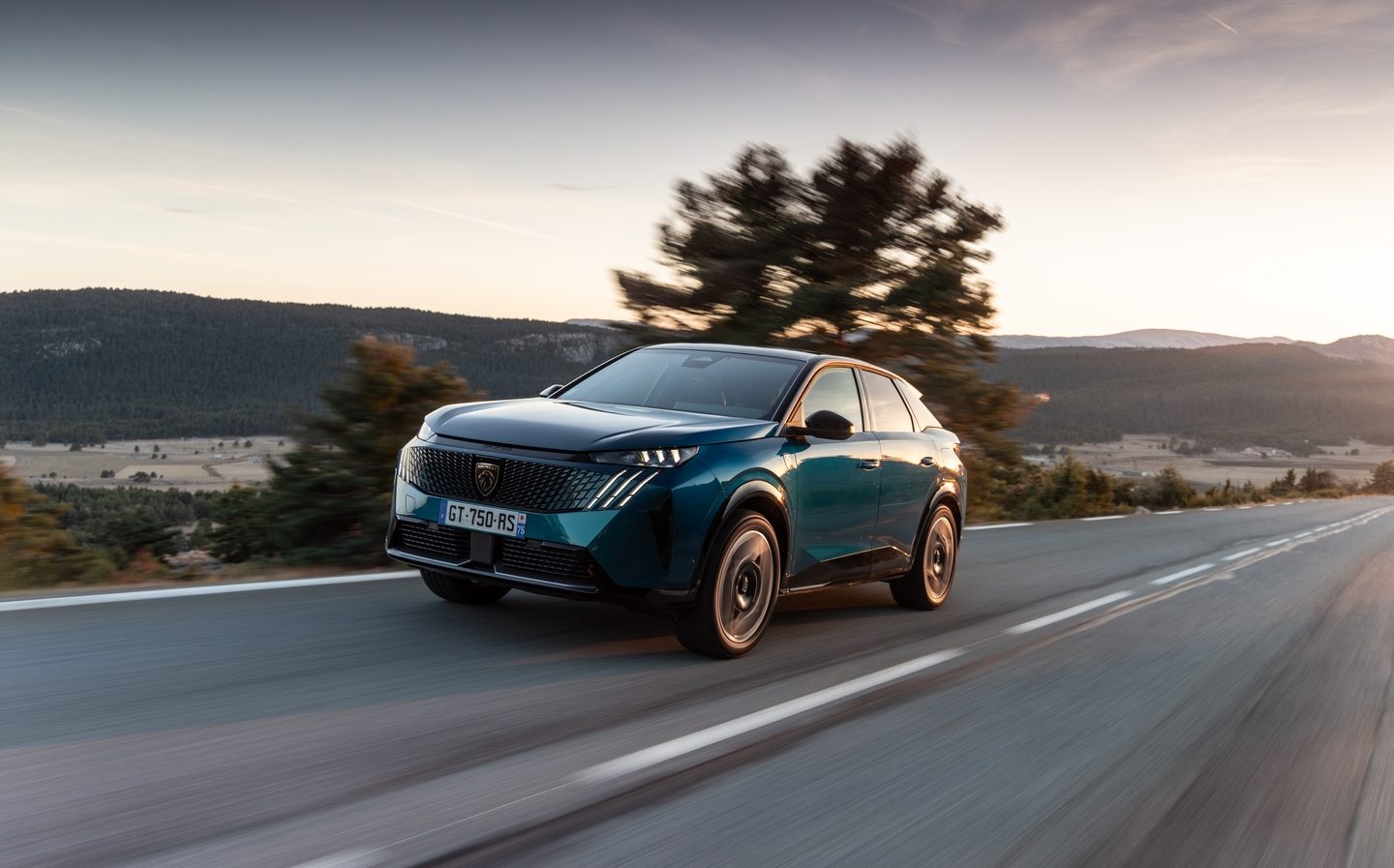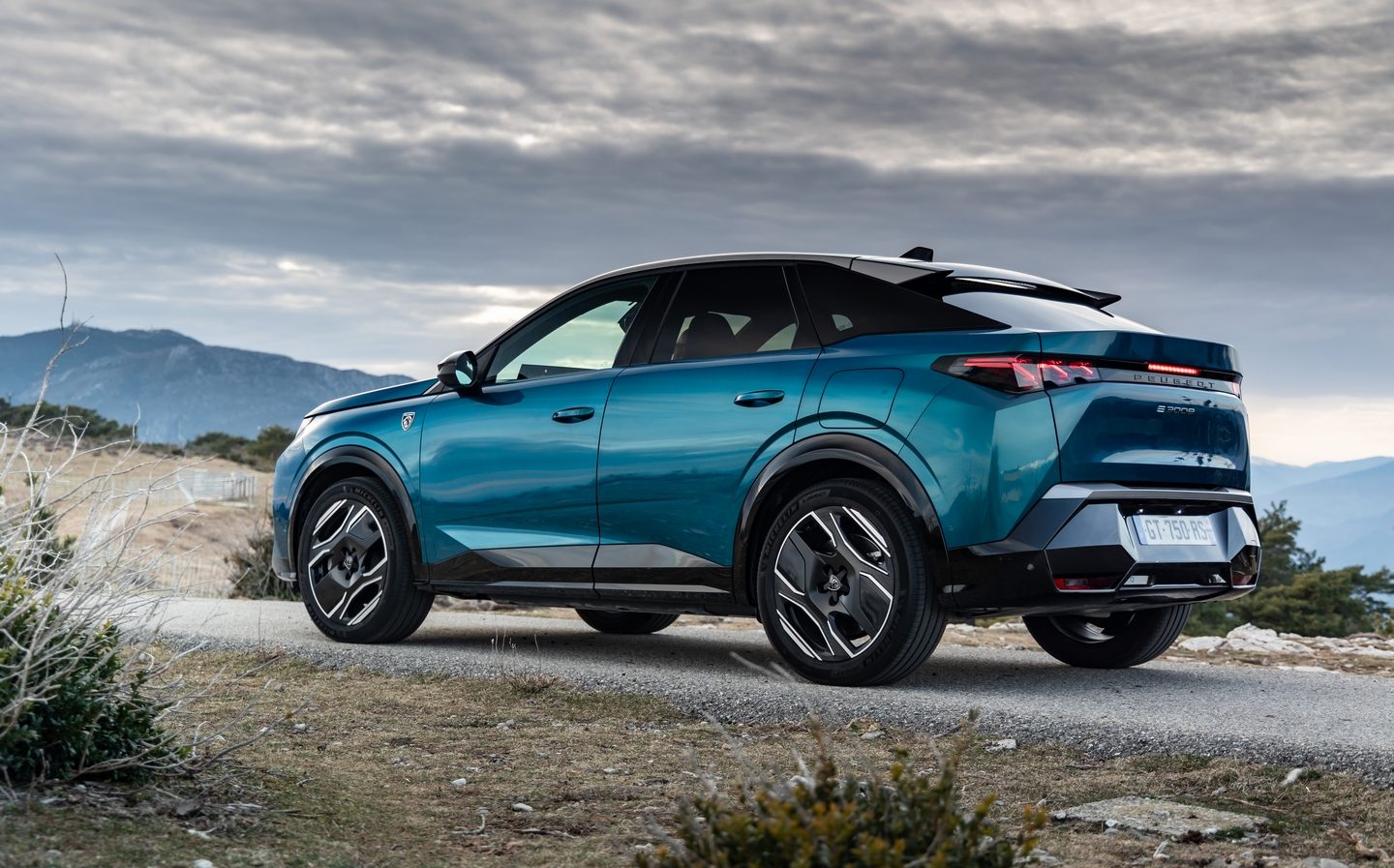Peugeot e-3008 2024 review: Radical new look and pure-electric power, but has French crossover lost its spark?
A Yorkshire pudding
E-Lion: not a taciturn Yorkshireman questioning the veracity of someone else’s statement of fact. It is, in fact, Peugeot’s strategy to electrify its product range in rapid order. By 2030 — unmoved by the UK government pushing back the ban on new petrol and diesel cars the new-car internal-combustion to 2035 — the French manufacturer wants 100 per cent of the vehicles it sells across Europe to be fully electric.
And Peugeot has made a decent start on its plan. The French carmaker has already hit its target of having an electrified option in every one of its product lines on offer in showrooms by last year, helped by the fact that it’s part of the Stellantis group, which is also going electric with Vauxhall, Citroën, Fiat, Jeep and its other brands, and they can share components.
By “electrify”, though, Peugeot is including plug-in hybrids. But actual pure-electric vehicles sporting the lion badge? There were, up until recently, just two. These were the e-208 supermini and e-2008 compact crossover.
Both are more than decent cars but they’re are also quite short-range things, by the latest standards, and best suited to urban and sub-urban duties only. Originally sold with batteries of 50kWh capacity, and later upgraded to 54kWh, their official ranges are between about 200 and 250 miles, which in reality (and in the best possible circumstances) only translate to something around 180 miles.
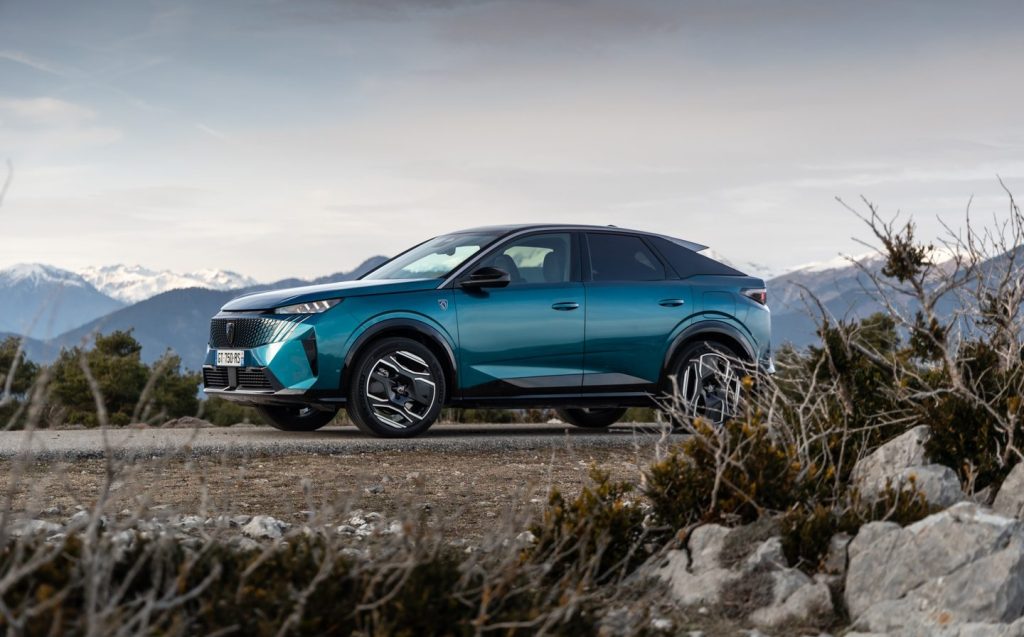
The next wave
Time, then, for e-Lion to get going in earnest, ‘ee bah gum. And this car, the new e-3008, is part of the next phase of the process. No longer will there just be one electrified model in every Peugeot product line-up; by 2025, there will be one fully electric car as well.
This avalanche of zero-emission machines has already begun with the all-new e-308 and its e-308 SW estate sibling, while both an e-408 and an e-5008 are on the horizon, too.
Arguably, though, it’s the the e-3008 that is absolutely pivotal to Peugeot’s fortunes. The previous 3008, built from 2016 until late into last year, was a roaring success, and it achieved that status because it was largely brilliant. It looked good on the outside, it was great on the inside, it drove sweetly and it had a range of efficient, amenable engines — including a few plug-in hybrid options.
Big shoes for the new e-3008 to fill, but if anything shows Peugeot’s conviction in the electric dream, it’s the fact that the e-3008 has preceded any other 3008 to market.
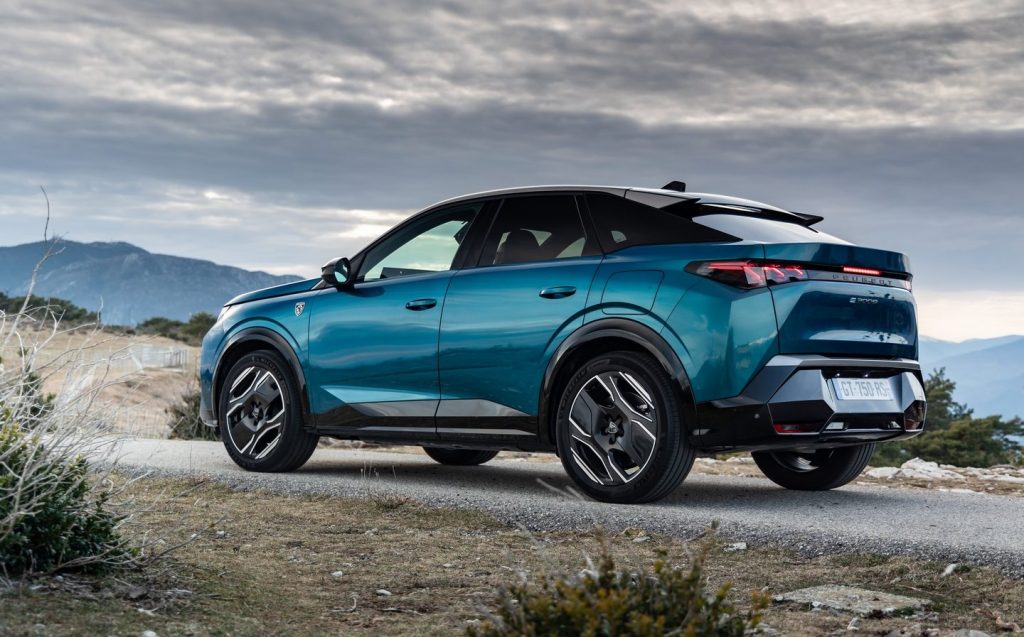
Stellantis’s Atlas
What’s unusual about this move is that the e-3008 isn’t just critical to Peugeot’s future, it’s also carrying almost the whole weight of the Stellantis super-conglomerate on its shoulders as well. It sits on underpinnings with an electric car focus, and it allows the chassis and electric powertrain combination to be adapted for each new EV coming from every car brand under the Stellantis umbrella.
In other words, it doesn’t take much sleuthing to work out there’ll soon be an electric equivalent to the Vauxhall Grandland. And the Citroën C5 Aircross. And the DS 7. And probably an Alfa Romeo of some sort. And a Jeep. And a Fiat. And… well, you get the picture.
Three’s the magic number
For the e-3008 range, the vanilla car is a single-motor, front-wheel-drive model with a 73kWh battery pack and a peak output of 211bhp. A richer-tasting version adds a second motor, driving the rear wheels, and that hikes power to a robust 322bhp.
Both of these will do about 325 miles on a single charge of their battery pack, however, so perhaps the headlines all go to a long range version, which again makes use of a single motor up front, but this time rated at a very slightly more flavoursome 228bhp, but more significantly is fitted with a whopping 98kWh battery. That’s almost as large as the pack fitted to the updated Porsche Taycan.

This blesses the e-3008 Long Range (its official name) with a maximum certified range of 435 miles… or at least Peugeot hopes it will once the WLTP homologation process is complete. So even if you take into account the lower real-world range, that will still make the e-3008 Long Range one of the most useful non-luxury EVs on the market for anyone who regularly sits on the motorway for great distances.
Our drive, though, was in the 211bhp single-motor car with the smaller battery and a theoretical maximum range of 327 miles. And, if we’re honest, we were not that impressed.
A large problem
A good portion of this base-grade e-3008’s shortcomings relates to its sheer size. This translates into a startling kerb weight of 2,108kg. This is for the single-motor model with the smallest battery, remember. The Dual Motor AWD will be more like 2,150kg, and lord knows what the Long Range will clock in at with that goliath battery pack under its floor. It’ll probably weigh as much as Harrogate.
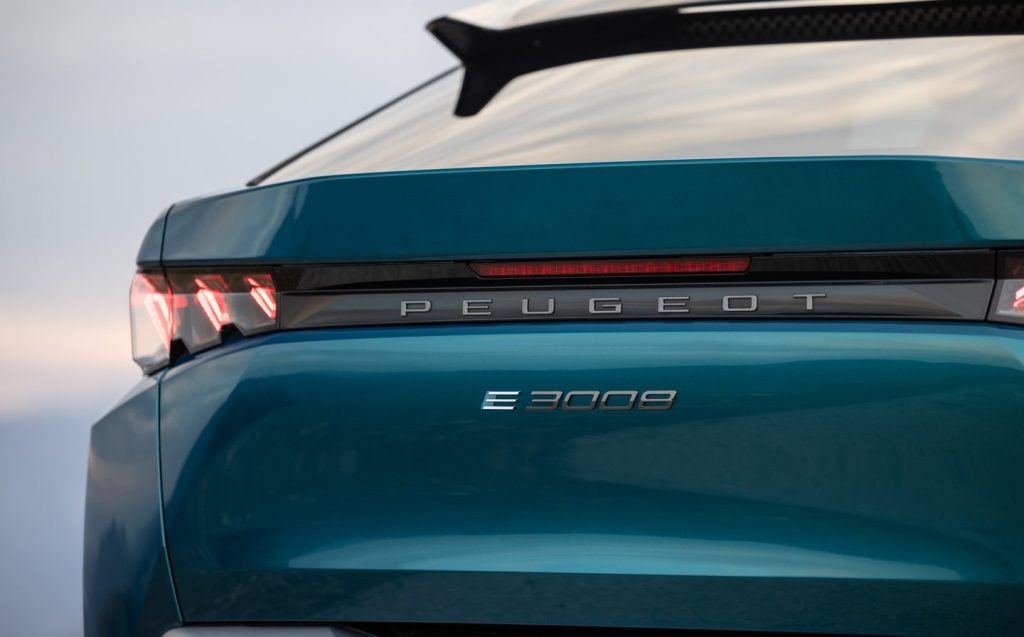
Behind the wheel you soon realise that 211bhp and 255lb ft of torque (twisting force) — figures that would have been most healthy for any petrol car — are nowhere near enough in something clocking in at 2.1 metric tonnes. At no point does this version of the e-3008 feel even remotely fast. Its power delivery is admirably smooth, granted, but you don’t get any of that nice, whooshing surge of acceleration you normally get from the best — or even decent — EVs.
It also doesn’t help that the power and torque are both denuded if you don’t have the car in Sport mode. The e-3008 only gives you 187bhp in the Normal setting and just 168bhp in Eco. Those deficits can really be felt.
Built like a rugby league prop
Then there’s the handling. Peugeot has long had a reputation for creating plenty of dynamic delicacies over the decades; cars that rewarded their drivers. This has informed its place in the present-day Stellantis portfolio, where it is supposed to be the sportier of the mid-range brands.
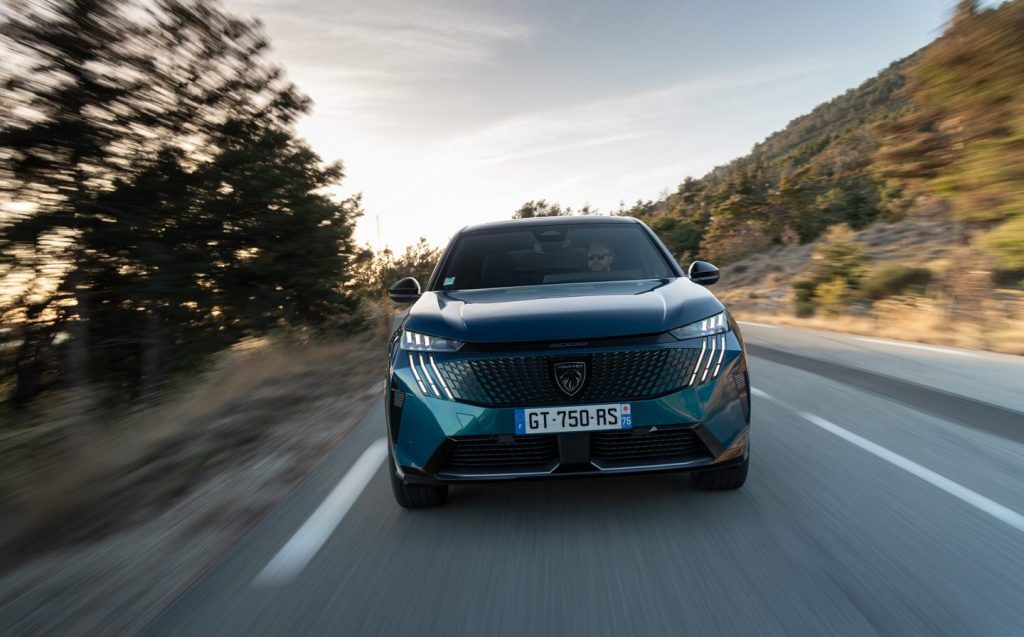
The only link to sport we can think of is that the e-3008 feels like a Leeds Rhino. It rumbles into corners without much grace, then scruffily slides wide of your intended cornering line — a process called “understeer” — if the front tyres relinquish their grip on the tarmac. Whereupon the outside wheel will scrabble frantically if you try and regain purchase with a bit of throttle.
So, it’s not fast, and it’s not sporty. Is the e-3008 totally without merit, then? Well, no. It isn’t. In fact, for pootling around its perfectly pleasant.
For starters, while coupé-SUVs are not widely beloved for their appearance, this one doesn’t look half bad. The 20in alloys on our GT-spec car are fussy to gaze upon, while the front radiator “grille” is nothing of the sort, given an EV doesn’t need much cooling airflow at the front of the car.
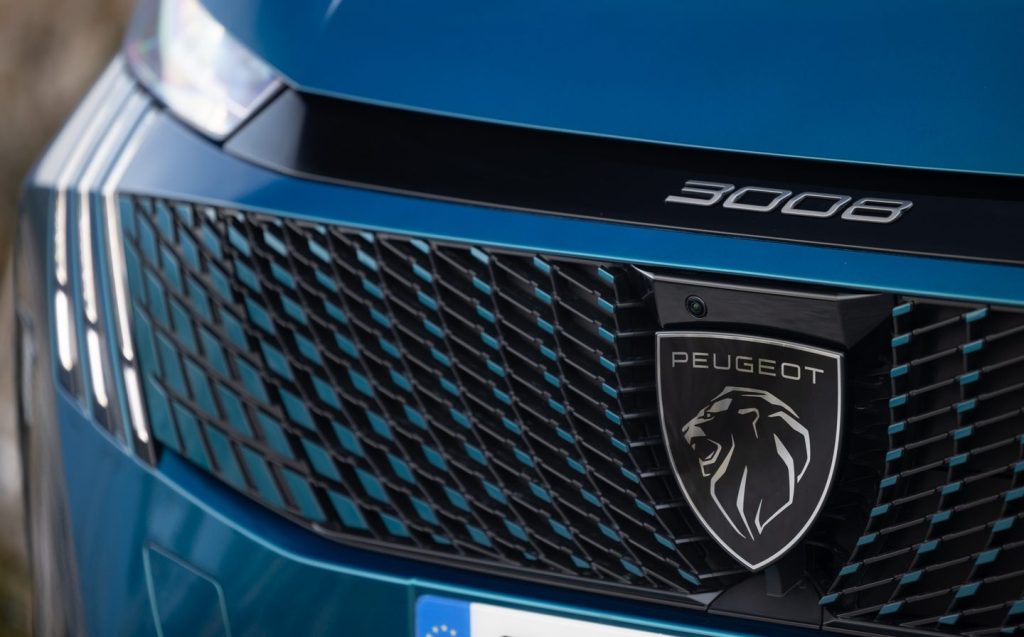
But the three-claw light signatures, supposed to make you think a lion has run its talons down the car’s surface, are attractive front and rear, while there’s even a hint of “Kamm” tail — where the downward slope at the rear of the car is abruptly cut off — to the upright back of the Peugeot coupé-SUV.
Interior delights
The interior is even better, though. It’s really high-quality inside and a lovely place to spend some time. The digital real estate has grown in size, yes, with a 21in HD display now topping the dash, and it sits above the oddly-small, low-mounted steering wheel that is Peugeot’s i-Cockpit hallmark.
That panoramic display is actually two screens in one housing, a non-touchscreen for the cluster and then one that will respond to the prod of a human finger in the middle for the infotainment. But Peugeot likes to call it one 21in item.
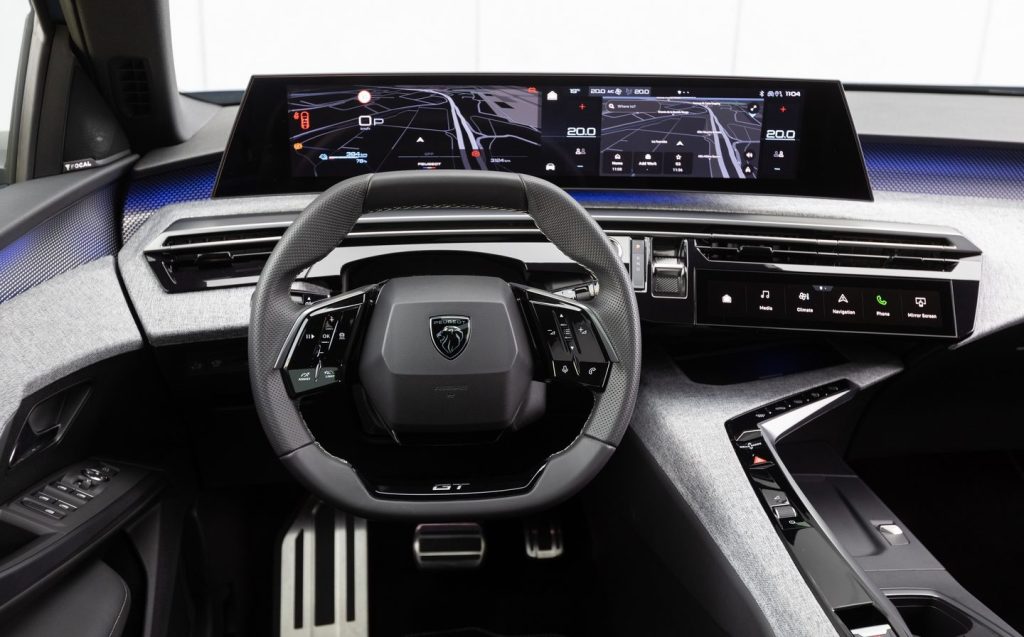
In general, the e-3008’s cabin isn’t only good to look at, it’s practical too. The boot is the same 520-litre rated size with all seats in use as the old 3008’s cargo bay, while there are huge storage pockets in that angular centre console in which you could almost pack most of the Dales.
And rear-seat passengers should get more headroom than they might have been expecting from the sloping roofline, as Peugeot’s designers placed the “break point” — the section at which it starts angling downwards — behind the position of their heads. In a coupé, the break point of the roofline should be in front, so technically the e-3008 is what we car dullards call a fastback.
Smooth and steady
It’s not a total loss on the driving front, either. Perhaps pertinently for an electric SUV designed to be used by families, the e-3008’s core kinematic strength is magnificent refinement.
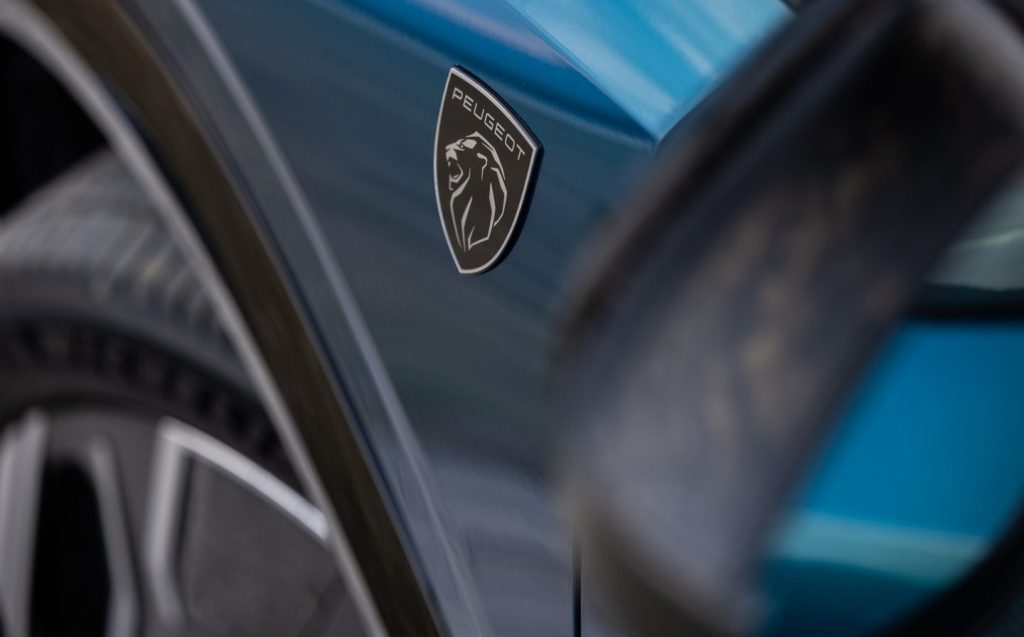
Even here, though, there’s a caveat. As a GT, it rolls on big 20in wheels and those, combined with its mass, mean its ride is borderline unforgivable on poorer urban roads. It can be actively bouncy as the dampers struggle to contain the Peugeot’s considerable weight.
But once the Tarmac improves, and/ or if your speeds rise beyond about 50mph, the e-3008’s suspension comes into its own. Whereupon you can revel in the quietness of the cabin and the refinement of the vehicle overall.
As for the driving range, 300 miles-plus might look like a lot of bluster but if our test drive was anything to go by, it should easily do around 250 miles without too much overly cautious driving or use of interior creature comforts. If you’re versed in the parlance of EV efficiency, it achieved 3.1 miles per kWh — some way shy of the official 4.4mi/kWh but still a respectable electric return.
It ain’t cheap
Charging is also reasonably quick, with a 20-80 per cent top-up at its maximum 160kW DC public charger rate taking 30 minutes.
So there’s much to like about the Peugeot e-3008, and while it does have some limitations, they’re the kind of things that won’t massively bother the typical end-user of an EV of this type.
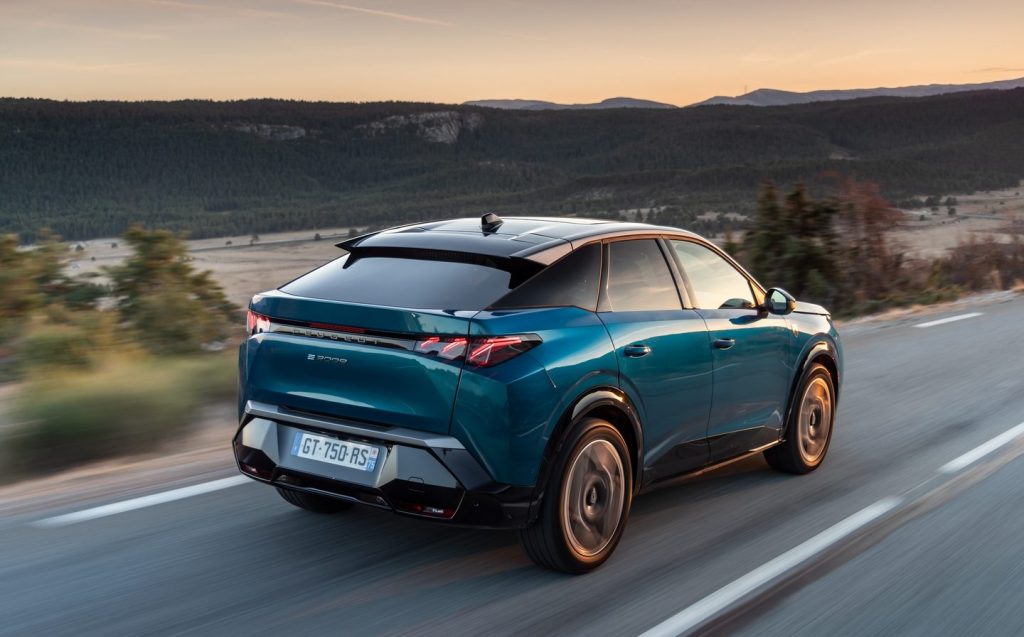
The thing is, this brave new “next-generation” Peugeot electric hasn’t really moved the game on. It might do, as the 435-mile 98kWh Long Range model, but this particular car is just another quietly assured electric SUV in a sea of rivals already on sale.
And with a pricetag just £350 short of 50 grand, it also costs enough to have any self-respecting Yorkshireman wincing.
Related articles
- If you were interested in our review of the Peugeot E-3008, you might like to read 10 things to know before you buy an electric vehicle
- These are all the car brands’ electric car plans
- Peugeot 208 and e-208 review 2023: Bright future for updated supermini?
Latest articles
- ‘Breaking point’ for repair bills before drivers replace their car revealed
- Renault Megane E-Tech 2024 review: Mildly refreshed electric crossover certainly talks the talk, at least
- Return of the wedge: Lotus Theory 1 concept car is 1,000bhp EV with 250-mile range
- F1 2024 calendar and race reports: What time the next grand prix starts and what happened in the previous rounds
- The Grand Tour finale: Clarkson, Hammond and May’s time had come, and it was a dignified exit
- Genesis brand to race at Le Mans — possibly as early as 2026
- Lando Norris takes to Silverstone in life-sized McLaren P1 Lego model
- Looking back at the Goodwood Revival 2024 in pictures
- James May says ‘it had to end’ ahead of final-ever Grand Tour with Clarkson and Hammond


